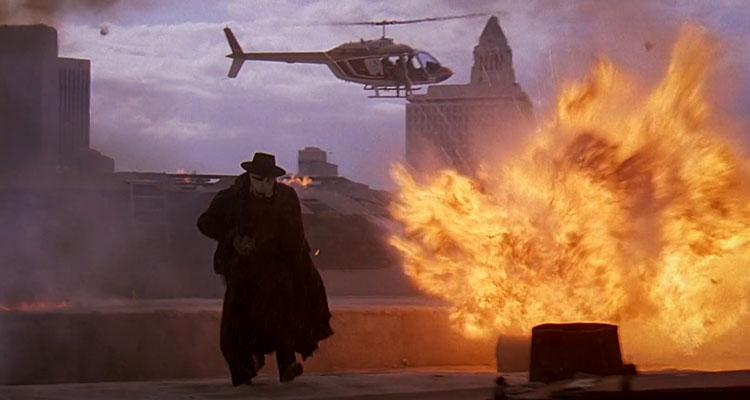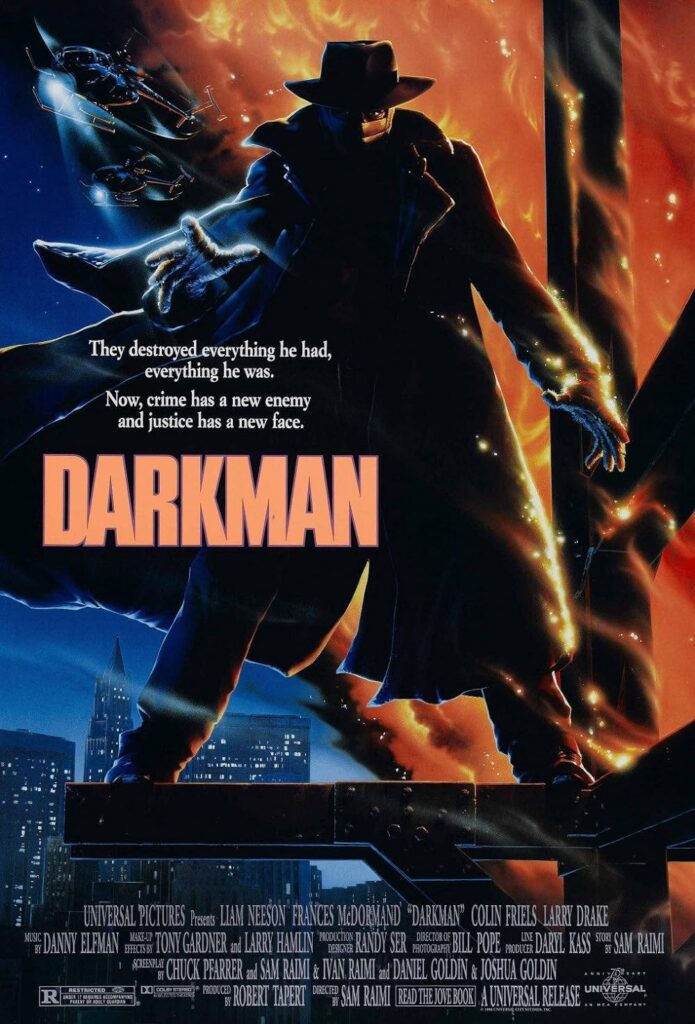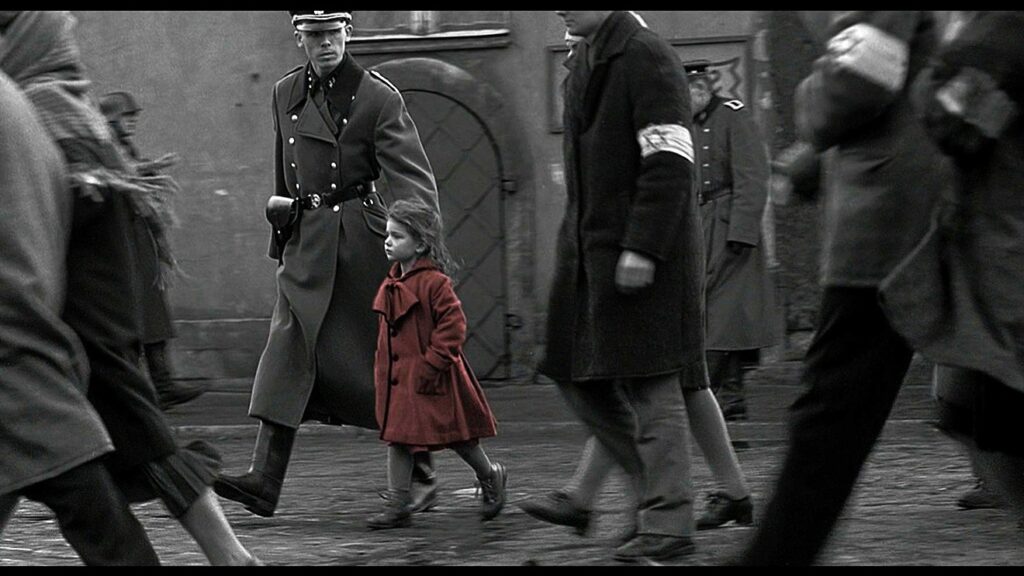
Darkman (1990) – Review

“Darkman,” the 1990 neo-noir superhero film directed by the ever-inventive Sam Raimi, is a furious funhouse of cinematic creativity and a compelling concoction of science fiction, romance, and comic book fantasy. It serves as a masterclass in how a director’s singular vision, unbridled imagination, and technical ingenuity can transcend genre boundaries and budget constraints to craft a memorable piece of cinematic artistry.
Crafting the Antihero
Dr. Peyton Westlake, magnificently portrayed by Liam Neeson, is a scientist feverishly working on a synthetic skin to help burn victims. However, the universe, with its cruel sense of humor, transforms him into his own test subject after a brutal attack leaves him horribly disfigured. With his face and life lost, but gained is a chaotic set of superpowers – immunities to feeling pain and augmented strength. But like an overheated pot of scientific stew, these powers simmer with undesirable side effects, making our hero’s journey as darkly tumultuous as it is revenge-fueled and triumphant.
Raimi’s Cinematic Canvas
Sam Raimi paints the screen with broad, bold strokes. His camera doesn’t just capture scenes; it slams, swoops, and swings through them with an abandon that energizes every frame. Known for his work on “The Evil Dead” series, Raimi’s affinity for horror aesthetically invigorates “Darkman,” lending the film a tone that is as unsettling as it is captivating. The director’s utilization of shadow and light, colored gels, and dramatic camera angles delivers a viscerally stylistic viewing experience that merges comic book dynamism with noir elegance.
Behind the Shadows: Production Brilliance
Diving into the film’s behind-the-scenes, one must applaud the creativity involved in navigating a modest budget. Special effects makeup and practical effects played a considerable role. The creation of Westlake’s disfigured appearance and the synthetic skin experiments required inventive prosthetics and makeup effects that brought believable grotesquery to the forefront.
The film also thrived on set design and location choices. The dramatic, grimy, and shadow-laden environment is a character in itself, reflecting the internal struggles and chaos of our anti-hero. Details in the environment, coupled with thoughtful cinematography, create an atmospheric presence that hangs heavily, enriching the visual storytelling.
Scripting & Performance
The script, a crucible where superhero mythos and tragic pathos are melded, gives space for performances to shine. Liam Neeson’s Peyton Westlake/Darkman is the tragic nucleus of this film. Neeson imbues the character with vulnerability, rage, and an evolving savagery, navigating his transformation with a commitment that anchors the movie’s wilder flights of fancy.
Frances McDormand as Julie, Westlake’s love interest, brings a nuanced performance that moves beyond the damsel in distress archetype. Her interactions with Westlake add an emotional depth and human touch that contrasts with the brutal world of revenge and violence unfurling around them.
Musical Resonance
Danny Elfman’s musical contribution to “Darkman” deserves its own ovation. The score, a symphony of the gothic, heroic, and heartbreaking, acts as an emotional guide, enhancing the narrative’s ebbs and flows and contributing to the film’s larger-than-life atmosphere.
Final Reflections
“Darkman” is more than a superhero film. It’s a creative battlefield where various film genres and styles clash and intertwine, and where Raimi’s distinctive directorial style can run gloriously amok. It’s a testament to imaginative filmmaking, where boundaries are both acknowledged and audaciously ignored. With its potent blend of horror, noir, romance, and superhero lore, “Darkman” showcases the magic that happens when a unique vision is uncompromisingly brought to life on the cinematic stage.




